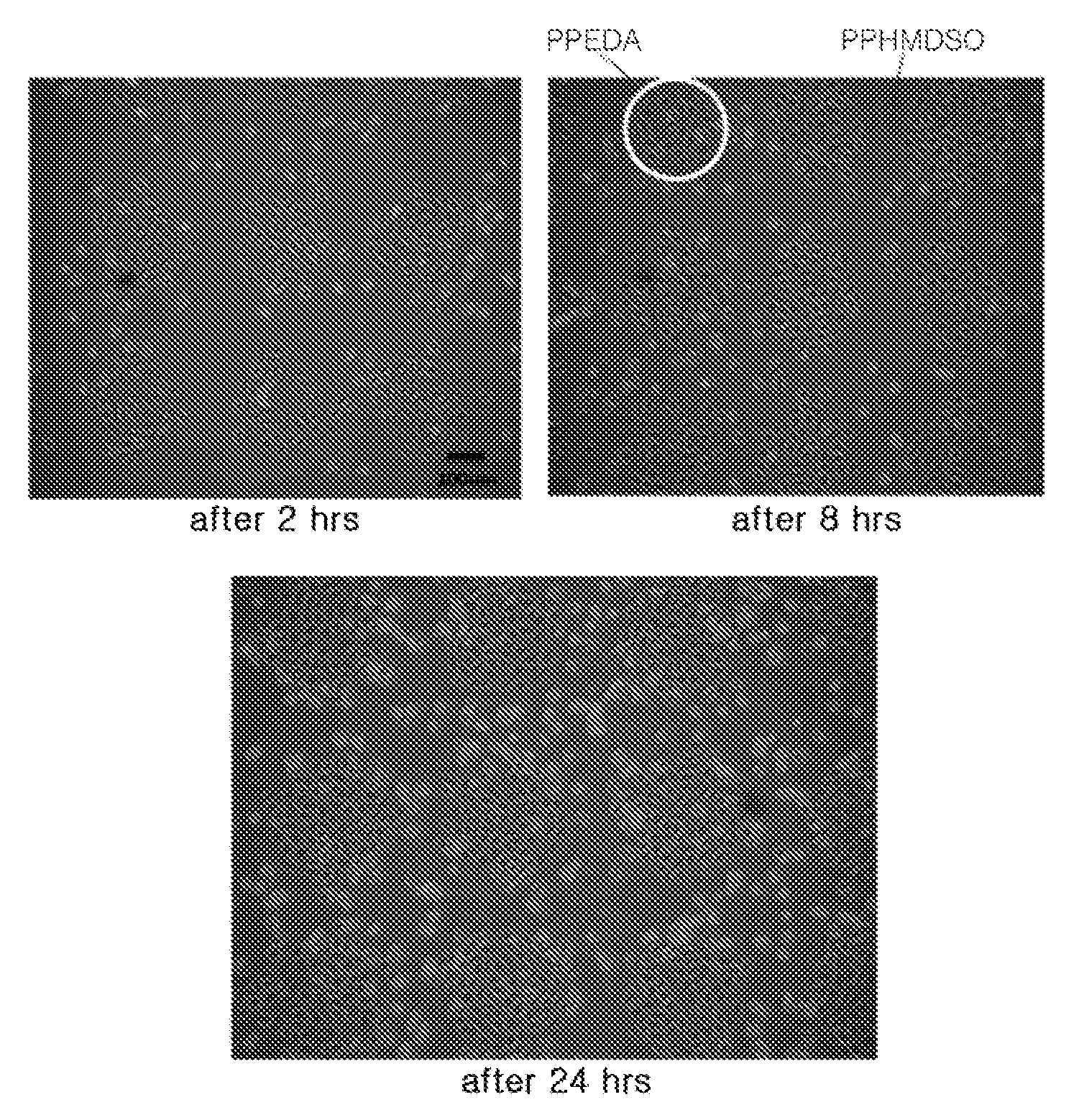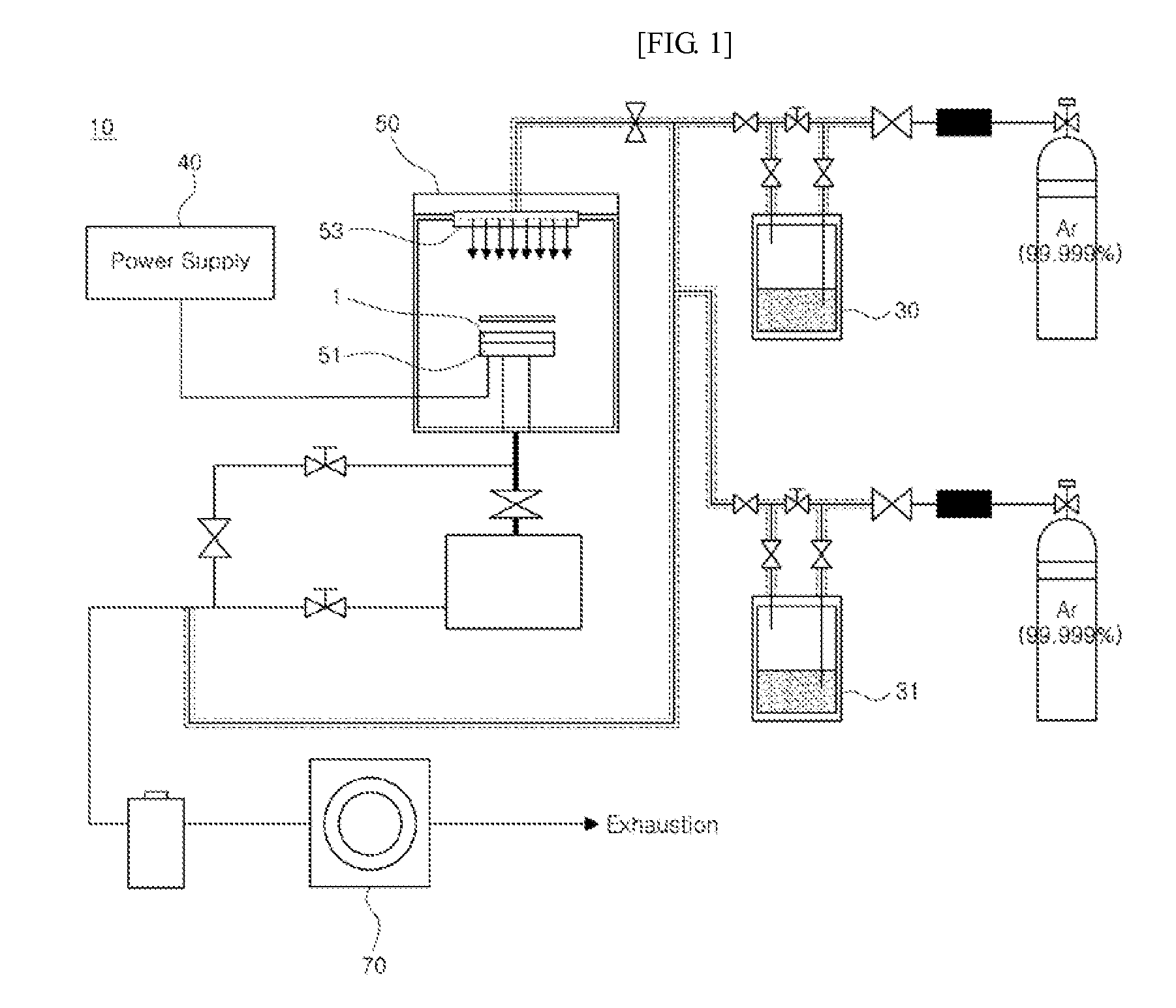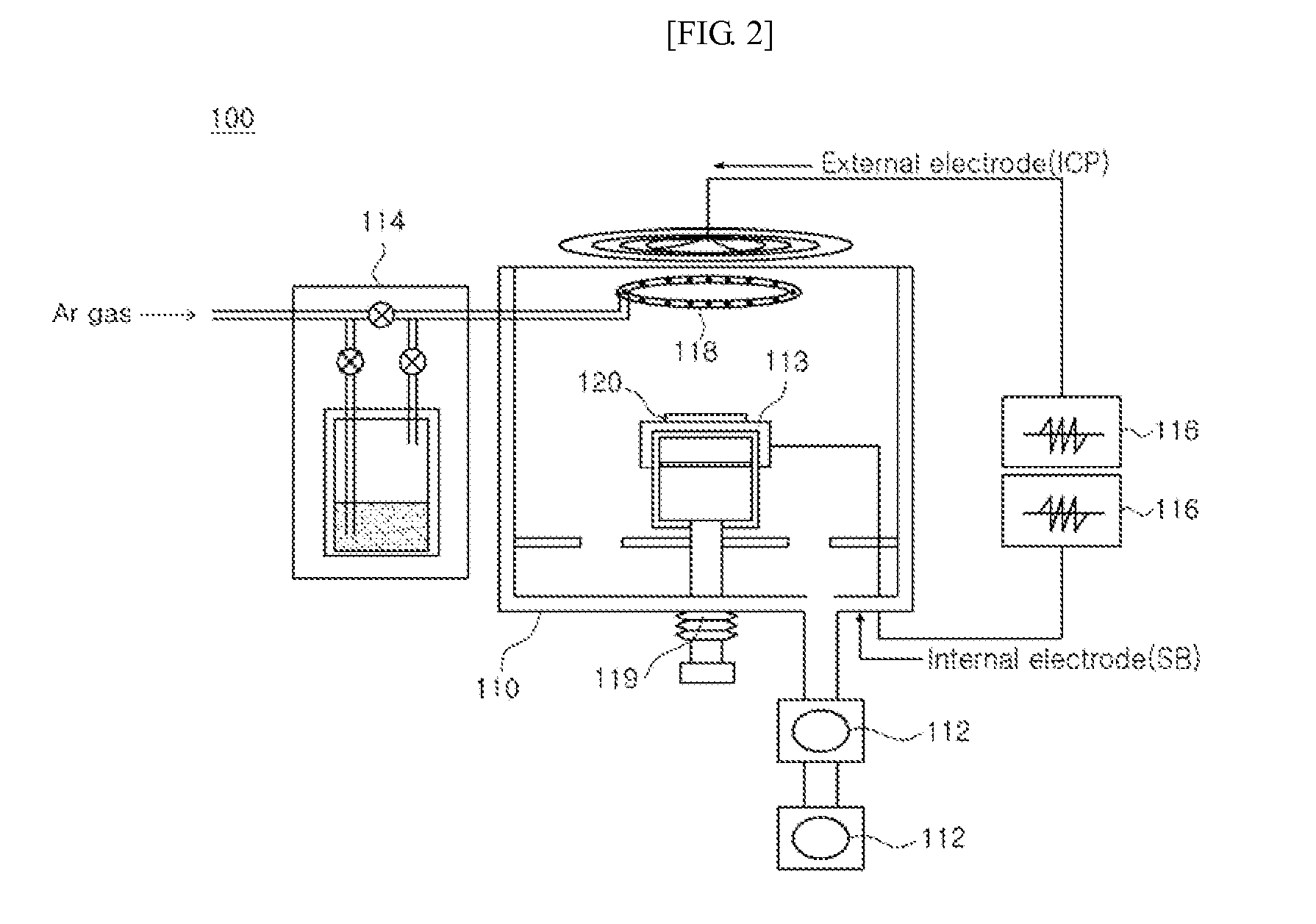Method of manufacturing patterned subtrate for culturing cells, patterned subtrate for culturing cells, patterning method of culturing cells, and patterned cell chip
- Summary
- Abstract
- Description
- Claims
- Application Information
AI Technical Summary
Benefits of technology
Problems solved by technology
Method used
Image
Examples
preparation example 1
Formation of First Plasma Polymer Layer on Substrate
[0076]A plasma polymerized hexamethyldisiloxane (PPHMDSO) thin film prepared by plasma enhanced chemical vapor deposition using hexamethyldisiloxane as a first precursor material was deposited on a glass slide having a size of 75 mm×25 mm (Corning Microslide Plain, Cat#: 2947, Corning, N.Y.).
[0077]Specifically, the deposition was performed using the plasma enhanced chemical vapor deposition apparatus depicted in FIG. 1. The plasma reaction chamber 50 has a cylindrical shape and is constructed of stainless material. Hexamethyldisiloxane monomer was placed into the bubbler 30, 31 which was heated at 50° C. Hexamethyldisiloxane molecule was vaporized by using an inert gas of argon as a carrier gas and injected into the plasma reaction chamber 50. SB power was supplied to attach the rf generator to a slide substrate holder 51 to generate plasma around the slide. Here, the wall surface of the plasma reaction chamber 50 was put to earth....
preparation example 2
Formation of First Plasma Polymer Layer on Substrate
[0078]A substrate having a first plasma polymer layer, in which a plasma polymerized hexamethyldisiloxane thin film was deposited on a glass slide, was manufactured in the same manner as in Preparation Example 1, except that the internal electrode (SB) of the plasma reaction chamber 50 was maintained at 30 W in Preparation Example 2.
preparation example 3
Formation of First Plasma Polymer Layer on Substrate
[0079]A substrate having a first plasma polymer layer, in which a plasma polymerized hexamethyldisiloxane thin film was deposited on a glass slide, was manufactured in the same manner as in Preparation Example 1, except that the internal electrode (SB) of the plasma reaction chamber 50 was maintained at 50 W in Preparation Example 3.
PUM
 Login to View More
Login to View More Abstract
Description
Claims
Application Information
 Login to View More
Login to View More - R&D
- Intellectual Property
- Life Sciences
- Materials
- Tech Scout
- Unparalleled Data Quality
- Higher Quality Content
- 60% Fewer Hallucinations
Browse by: Latest US Patents, China's latest patents, Technical Efficacy Thesaurus, Application Domain, Technology Topic, Popular Technical Reports.
© 2025 PatSnap. All rights reserved.Legal|Privacy policy|Modern Slavery Act Transparency Statement|Sitemap|About US| Contact US: help@patsnap.com



